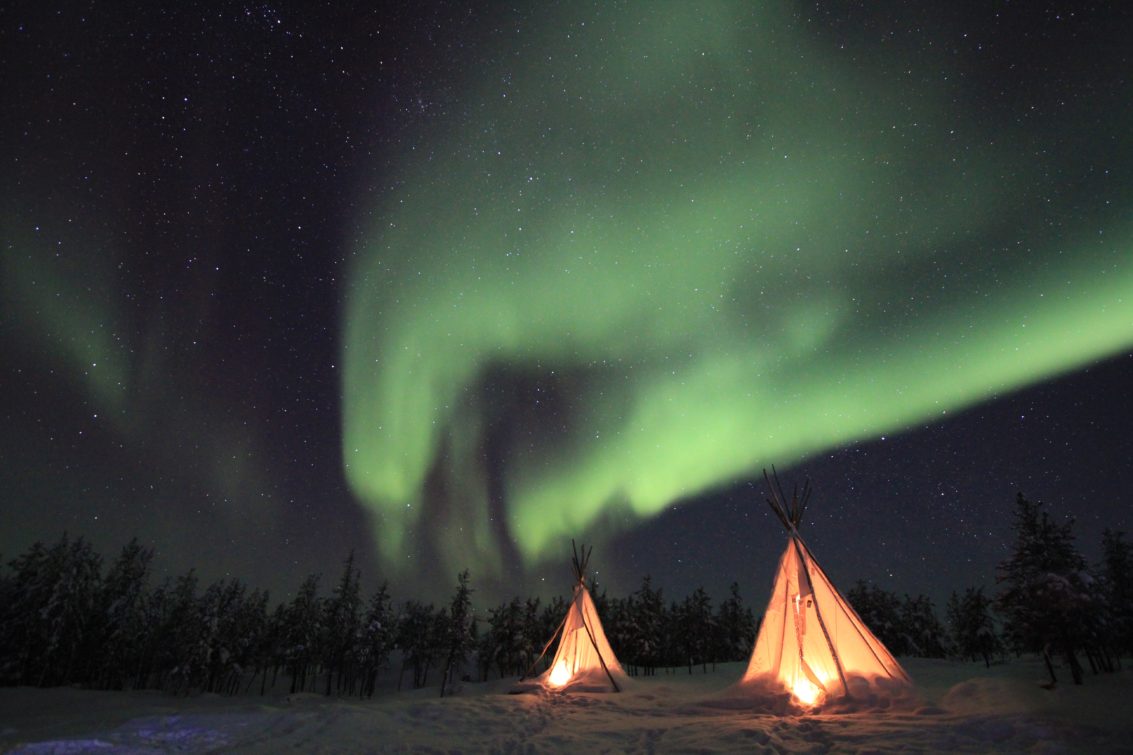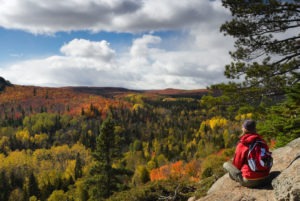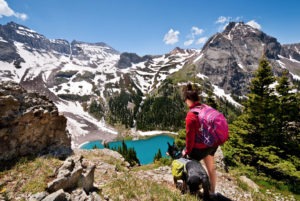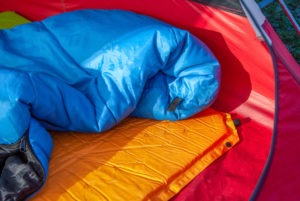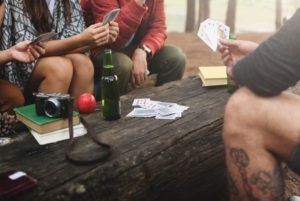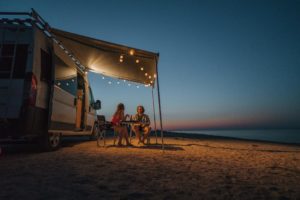There is a lot to love about camping in the winter. For starters, you’ll have your pick of campsites, and the likelihood that you’ll have neighbors is pretty low. You can count on a deep quiet that’s left unbroken even by the singing of birds in the morning. Besides the quiet, camping in the winter is incredibly cozy.
Campfires on a warm humid summer night can be uncomfortable. Mosquitoes are out in full force and rather than warming up by the flames you just sweat. But in the winter, a campfire actually serves the purpose of keeping you warm. Pair that with a hot drink, and you’re in for a comfy evening.
More than anything, winter camping is absolutely beautiful. Snow-caked pines and silvery-blue lakes and streams create a stunning mural fit for the Uffizi, and the stars shine brighter in a night sky that lingers longer. But before you head out to experience it for yourself, read through this handy introduction to winter camping to get yourself prepared for an incredible experience.
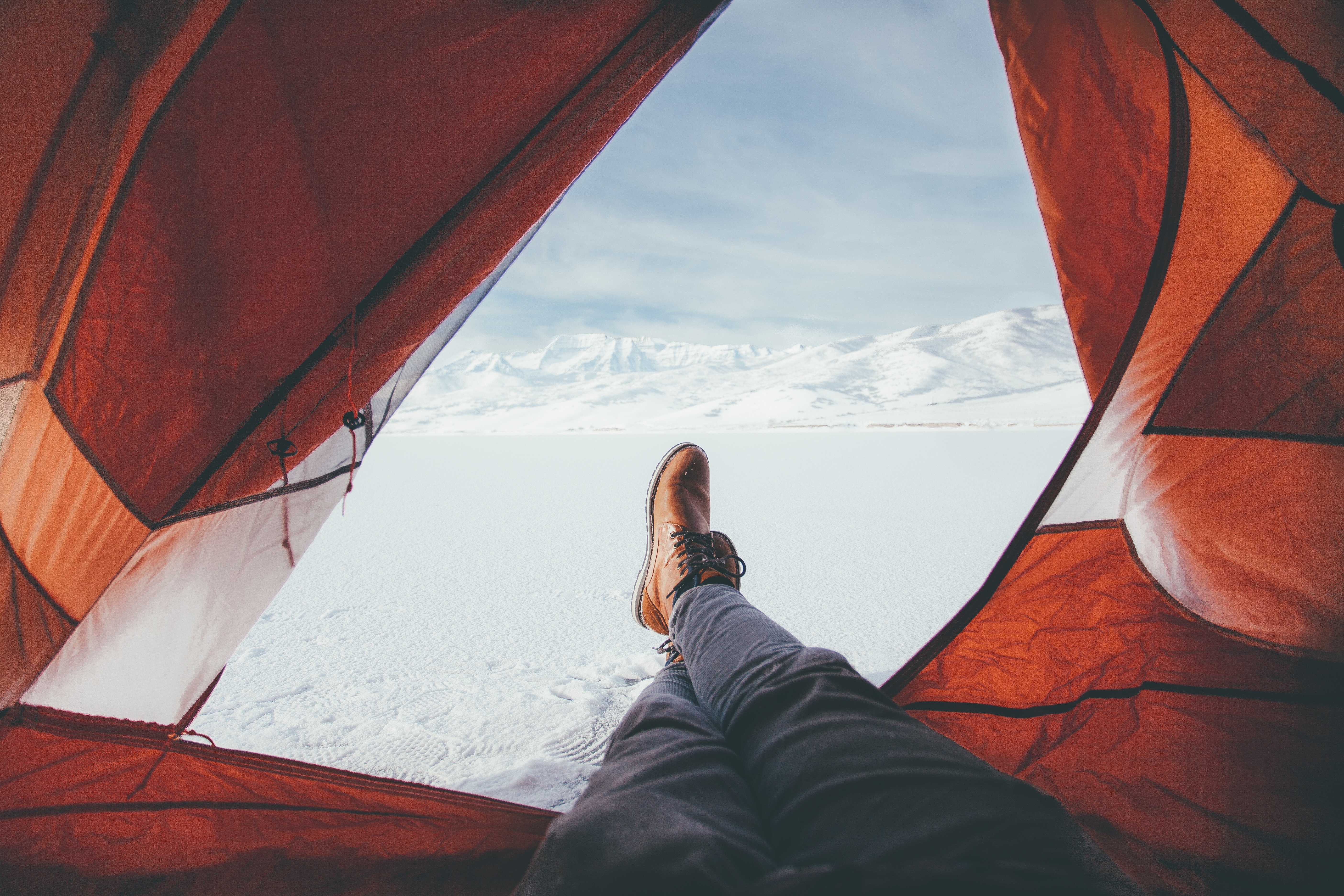
Choose a Tent
Camping with the proper tent for the winter is one of the most important things to get right. For starters, the thing to look for is how many seasons your tent is rated for. 4-season tents are generally the best for winter camping, but a 3-season tent should work fine depending on where you live and how early or late into the winter you head out. The 4-season tent rating simply means that it is designed to withstand stronger winds, heavy snow and colder temperatures.
The next thing to decide is whether or not you want a double- or single-wall tent. Truthfully, there is value to both—it just depends on your budget and how much weight you want to carry. Double-wall tents will offer more insulation, reduce condensation and generally perform better on longer trips. Single-wall tents, on the other hand, are lighter to carry, making them great for those who are hiking or skiing long distances.
Another thing to remember is to always leave the top portion of your entrance zipper open to allow moisture to escape. Otherwise, moisture will build up inside the tent and freeze which is bad for the tent, bad for you and really just bad for everyone.
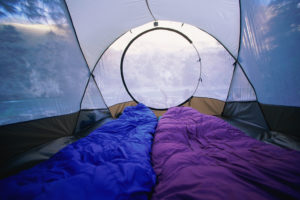
Find the right Sleeping Bag
A comfortable night in the winter wilderness begins with the right sleeping bag—chiefly one that will stay dry or dry fast when wet. Look for water-resistant down with a DWR-coated outer shell. You’ll most certainly end up more wet than you’d like, and these features will help to mitigate that. Down insulation generally weighs less than synthetic insulation and dries faster; however, it can be more expensive. Similar to tents, look for 4-season sleeping bags. As a general rule, your sleeping bag is the most important part of your winter journey, so I suggest investing wisely in a great sleeping bag.
If not, synthetic insulation can work as well. It’s cheaper, and may provide better insulation when wet. It won’t dry as fast, however, and weighs a bit more, so it may not be a great choice for those who are hiking or skiing long distances.
Perhaps the most important thing to be mindful of is how you are sleeping. This may sound odd, and it is, but a key rule to remember is to never breathe in your sleeping bag. There is a good chance your face will start to feel cold, but don’t simply cover it with your sleeping bag as moisture will build up and you’ll wake up damp and probably colder than before. If you insist on covering your face, make sure your nose and mouth can exhale out of the sleeping bag. I suggest wearing a balaclava, face-mask or placing a thin breathable t-shirt over your face instead.
I would also definitely recommend a waterproof stuff sack! Check out this blog on cold-weather camping for more tips on your tent and sleeping bag.
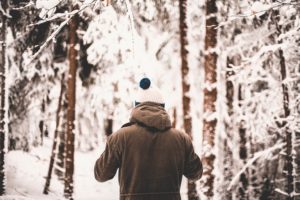
Wear the right layers
Generally I’m not picky about what kind of layers I wear, although I do love me some thermals. Ultimately, if you’re not freezing, you’re probably good, but there are some layers that are better than others. Merino wool is super warm, but it can make you sweat and isn’t super absorbent. If you’ll be hiking far or skiing, you may want to go with a synthetic fabric blend.
I like to start with a light t-shirt, then a base layer of some kind before topping it all with a comfy fleece. Once you’ve got that, throw on a soft-shell jacket for really cold, dry conditions or if you know you’ll be getting your heart rate up. Use a hard-shell jacket if the conditions will be wetter than usual. It isn’t as breathable as a soft shell, but it will help keep moisture out.
Bring two pairs of gloves or mittens in case one gets wet. They take a while to dry, so you’ll want an extra pair to wear while the other dries.
I like to overpack with layers. If you get too warm you can always remove a layer or two, just try not to sweat too much. Check out our huge variety of winter clothing here.
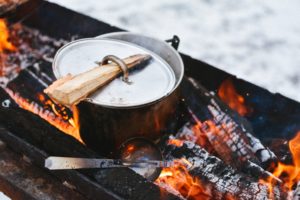
Build a Kitchen
If you ever get lazy on winter camping trips like I always do, half the fun you will have is just eating. Which is half the fun I have on a normal day anyway. Perhaps the best thing about winter camping is that you want to consume a lot of calories to stay warm, so eat up!
In order to embrace fine dining out in the frigid wilderness, there are a couple things to keep in mind. First is that, unlike summer camping, you should probably cook beneath some kind of tarp or light shelter. It will do you no good to place your stove on snow, so do your best to dig down to ground if you can. If not, there are handy stove stands you can pick up, but if you don’t want to add extra weight, place your stove on the head of a shovel instead.
Make sure that you’re using a liquid, white-gas stove for cooking instead of butane. It works much better in cold conditions. If you have to melt snow for water plan on using 8-ounces of fuel per day per person, but camping near a water source will help you save time and fuel. You can always use a campfire as well, provided you have access to wood.
Lastly, build a bomb dining area! I personally love to dine in a fine recliner carved out of the drift. Tables are easy to build as well, and if you’re lonely, you can build yourself some friends.
Other tips and tricks
- If you find yourself buried in layers and your sleeping bag, heat up a water bottle and place it between your thighs. This will heat the blood passing through your femoral artery and help warm you up.
- Don’t hold your pee! Go to the bathroom the moment you feel the urge. It takes energy to hold it in, and you want that energy to stay warm.
- Bring a headlamp for the long dark hours, and use lithium ion batteries. They work better in the cold.
- Wear sunglasses and sunscreen as reflective snow on a sunny day can do a number on your skin.
- Bring a pair of snowshoes for deep snow and long hikes.
- If it’s your first time winter camping, CAMP SOMEWHERE CLOSE TO CIVILIZATION. If you get too cold and realize you made a big mistake, you can head into town and warm up.
- Lastly, always check the forecast. Be prepared to deal with sudden freezes, thaws, snowstorms and whatever else may come your way.
Hopefully you’re feeling a little more confident about camping this winter. If you pay close attention to everything laid out in this blog, expect to have a wonderful time. Winter is truly one of the best times of the year to camp. Good luck!
